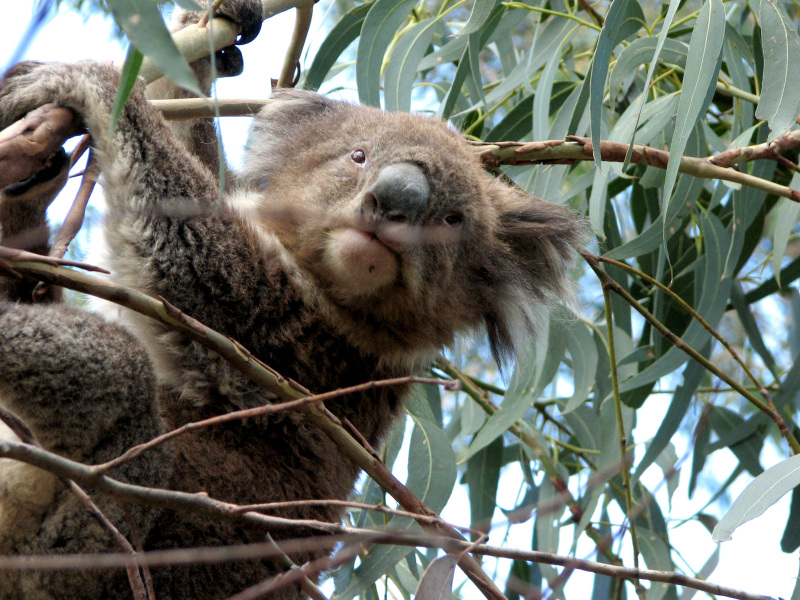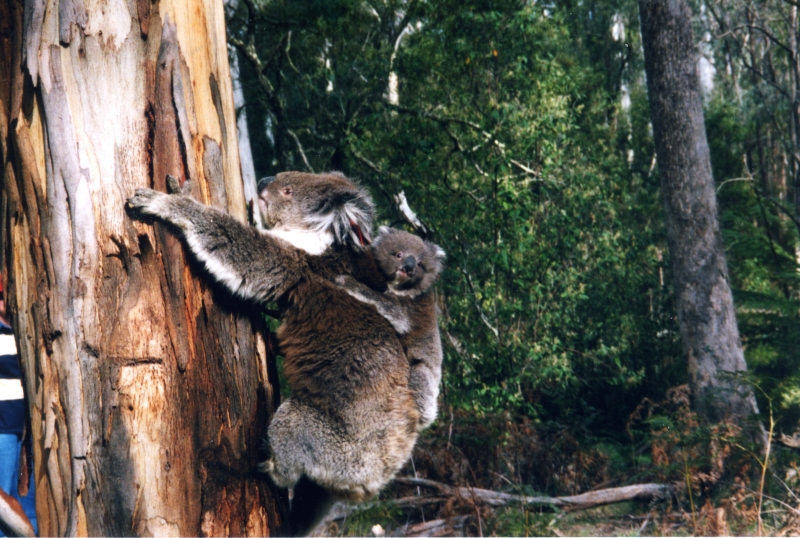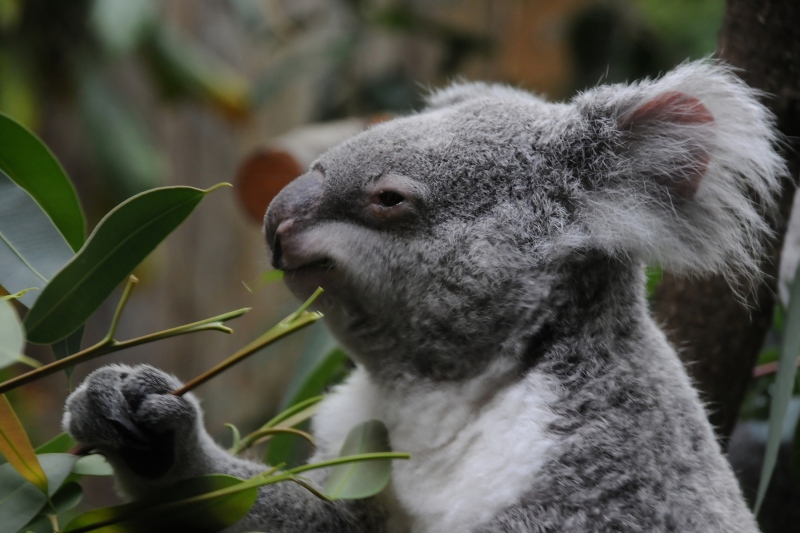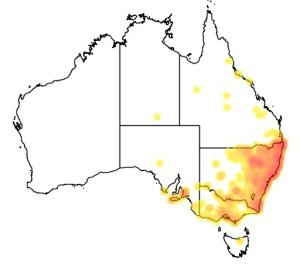Colours
Distinguishing features
It is easily recognisable by its stout, tailless body; round, fluffy ears; and large, spoon-shaped nose.
The fur of the koala is thicker and longer on the back, and shorter on the belly. The ears have thick fur on both the inside and outside. The back fur colour varies from light grey to chocolate brown. The belly fur is whitish; on the rump it is dappled whitish, and darker at the back.
Koalas from Victoria are twice as heavy as those from Queensland.
The species is sexually dimorphic, with males 50% larger than females. Males are further distinguished from females by their more curved noses.
(Wikipedia)
Size
- Up to 85 cm (Head to toe length)
Weight
- Up to 15 kg
Synonyms
Distribution
Distribution and habitat preferences
Koalas typically inhabit open eucalypt woodlands. (Wikipedia)
Diet
Koalas are herbivorous, and while most of their diet consists of Eucalypt leaves, they can be found in trees of other genera, such as Acacia, Allocasuarina, Callitris, Leptospermum and Melaleuca.
Although the foliage of over 600 species of Eucalyptus is available, the koala shows a strong preference for around 30. They tend to choose species that have a high protein content and low proportions of fibre and lignin.
The most favoured species are Eucalyptus microcorys, Eucalyptus tereticornis, and Eucalyptus camaldulensis, which, on average, make up more than 20 percent of their diet.



